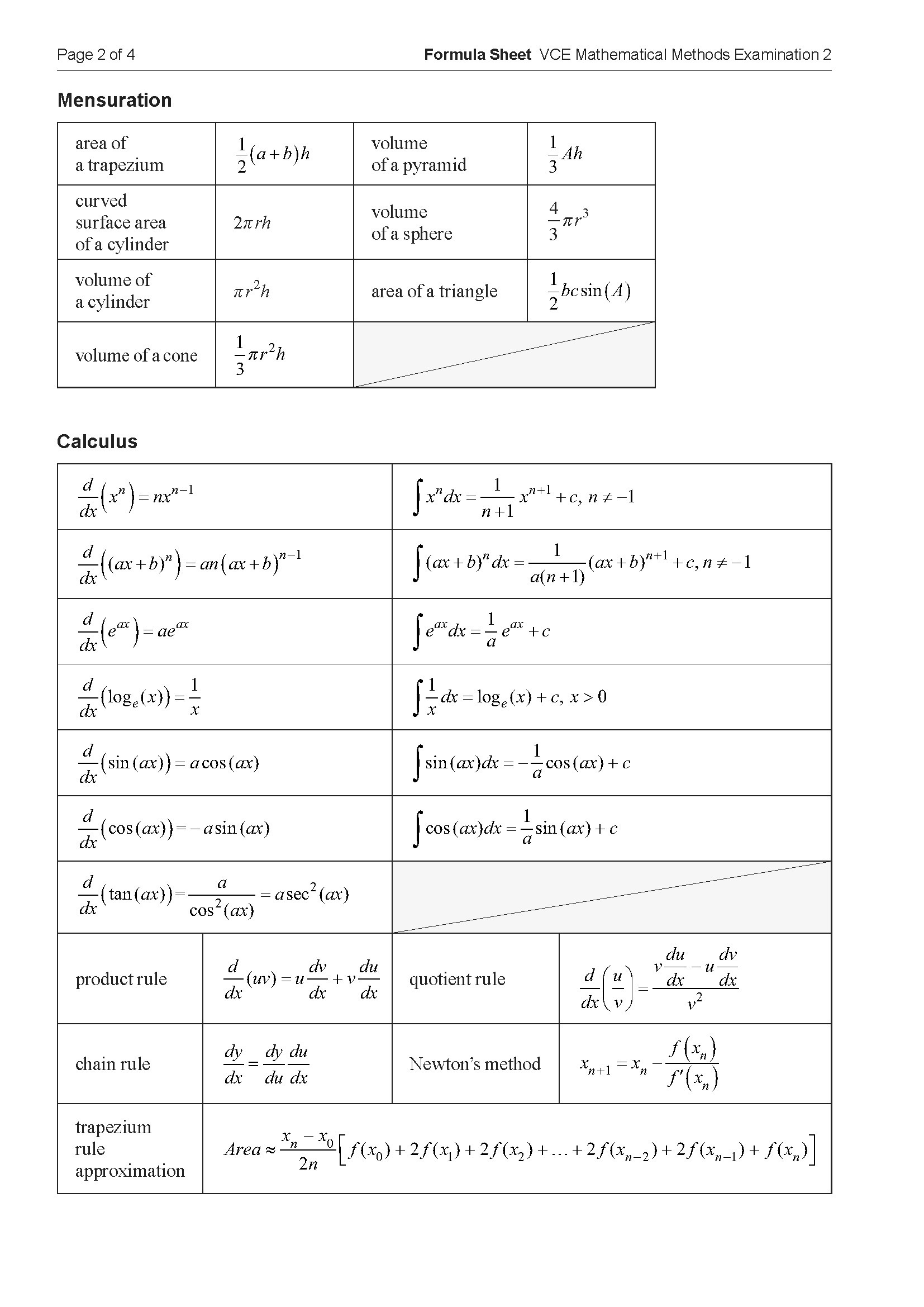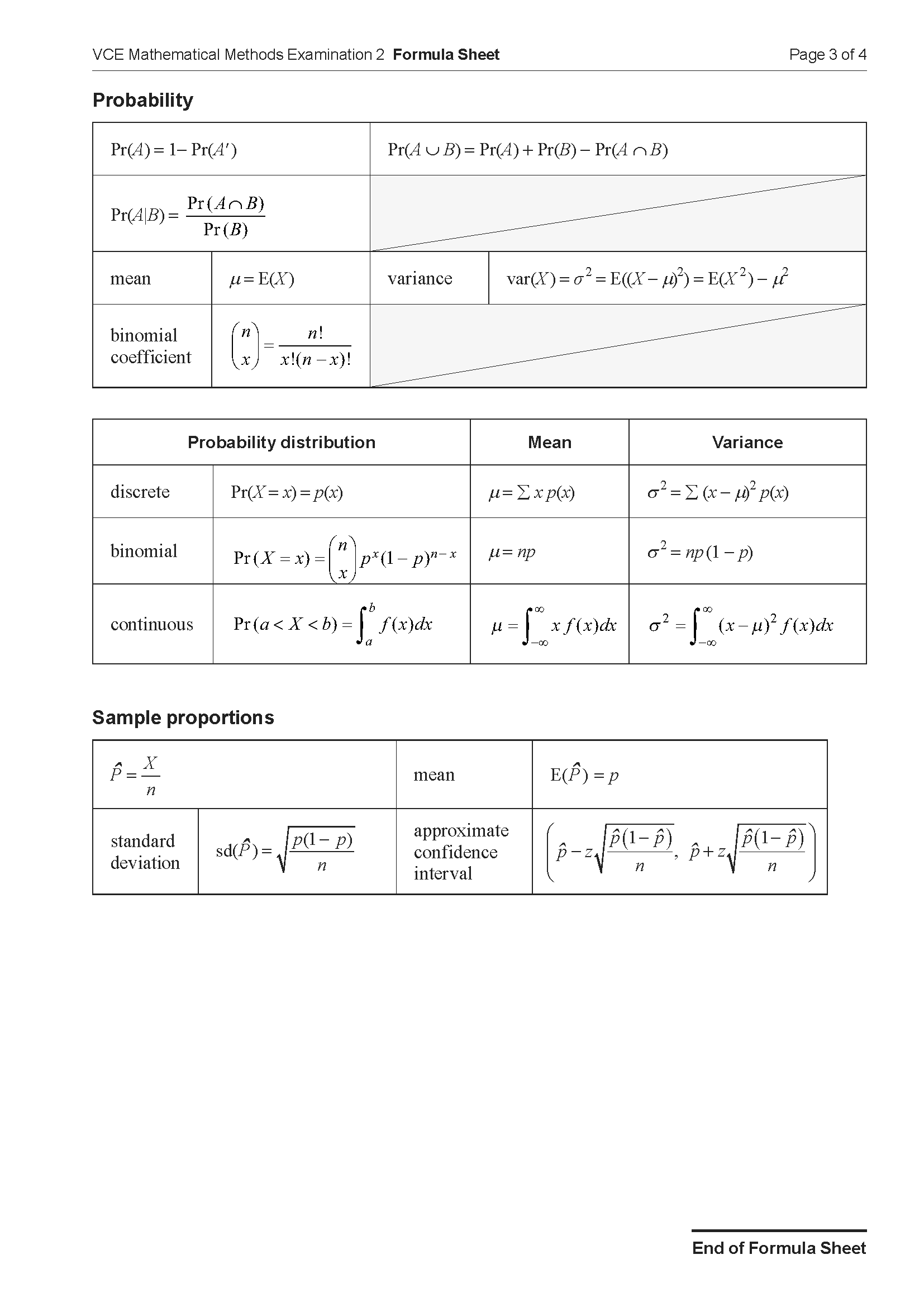2022 VCE Maths Methods Mini Test 3
Number of marks: 10
Reading time: 2 minutes
Writing time: 15 minutes
Section A – Calculator Allowed
Instructions
• Answer all questions in pencil on your Multiple-Choice Answer Sheet.
• Choose the response that is correct for the question.
• A correct answer scores 1; an incorrect answer scores 0.
• Marks will not be deducted for incorrect answers.
• No marks will be given if more than one answer is completed for any question.
• Unless otherwise indicated, the diagrams in this book are not drawn to scale.
Which one of the following functions is not continuous over the interval \( x \in [0, 5] \)?
- A. \( f(x) = \frac{1}{(x + 3)^2} \)
- B. \( f(x) = \sqrt{x + 3} \)
- C. \( f(x) = x^\frac{1}{3} \)
- D. \( f(x) = \tan\left(\frac{x}{3}\right) \)
- E. \( f(x) = \sin^2\left(\frac{x}{3}\right) \)
The largest value of \( a \) such that the function \( f : (-\infty, a] \to \mathbb{R}, f(x) = x^2 + 3x - 10 \), where \( f \) is one-to-one, is
- A. –12.25
- B. –5
- C. –1.5
- D. 0
- E. 2
End of Section A
Section B – No Calculator
Instructions
• Answer all questions in the spaces provided.
• Write your responses in English.
• In questions where a numerical answer is required, an exact value must be given unless otherwise specified.
• In questions where more than one mark is available, appropriate working must be shown.
• Unless otherwise indicated, the diagrams in this book are not drawn to scale.
Consider the system of equations
\[ \begin{aligned} kx - 5y &= 4 + k \\ 3x + (k + 8)y &= -1 \end{aligned} \]
Determine the value of \( k \) for which the system of equations above has an infinite number of solutions. 3 marks
A card is drawn from a deck of red and blue cards. After verifying the colour, the card is replaced in the deck. This is performed four times.
Each card has a probability of \( \frac{1}{2} \) of being red and a probability of \( \frac{1}{2} \) of being blue.
The colour of any drawn card is independent of the colour of any other drawn card.
Let \( X \) be a random variable describing the number of blue cards drawn from the deck, in any order.
a. Complete the table below by giving the probability of each outcome. 2 marks
\[ \renewcommand{\arraystretch}{2} \begin{array}{|c|c|c|c|c|c|} \hline x & 0 & 1 & 2 & 3 & 4 \\ \hline \Pr(X = x) & \displaystyle\frac{1}{16} & \rule{0pt}{2.5ex} & \displaystyle\frac{6}{16} & \rule{0pt}{2.5ex} & \rule{0pt}{2.5ex} \\ \hline \end{array} \]
b. Given that the first card drawn is blue, find the probability that exactly two of the next three cards drawn will be red. 1 mark
c. The deck is changed so that the probability of a card being red is \( \frac{2}{3} \) and the probability of a card being blue is \( \frac{1}{3} \).
Given that the first card drawn is blue, find the probability that exactly two of the next three cards drawn will be red. 2 marks
End of examination questions
VCE is a registered trademark of the VCAA. The VCAA does not endorse or make any warranties regarding this study resource. Past VCE exams and related content can be accessed directly at www.vcaa.vic.edu.au

